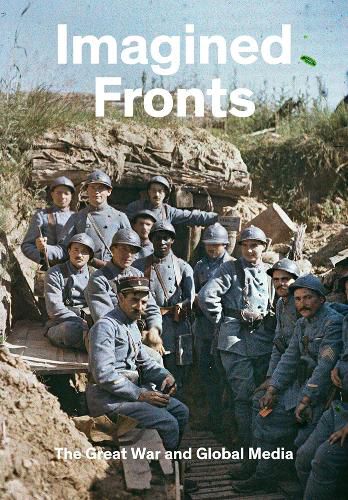Readings Newsletter
Become a Readings Member to make your shopping experience even easier.
Sign in or sign up for free!
You’re not far away from qualifying for FREE standard shipping within Australia
You’ve qualified for FREE standard shipping within Australia
The cart is loading…






How the first global media war impacted art, graphic design and cinema, from Otto Dix to Kathe Kollwitz
The media spectacle in which we live today has origins in the Great War (1914-18) and the burgeoning mediascape of newspapers, ephemera, photography and the new medium of cinema that made it the first global media war. The war's battlefields and contingent spaces became perhaps the most international human endeavor hitherto undertaken, with most Eastern and Western European countries and the Ottoman Empire involved, as well as forces from Australia, Canada, Asia, the Middle East and Africa, and Indigenous peoples including Maori, First Peoples and Choctaw "code talkers." This book examines the war through paintings, sculpture, posters, photographs, film stills and the graphic arts, showing how it affected the arts between 1914 and 1930, and the role of media in constructing a global "imagined community" that could be accepted as part of the war effort. Artists include: Johannes Baader, Ernst Barlach, Max Beckmann, George Bellows, Edith Collier, Raymond Desvarreux, Otto Dix, Raoul Dufy, Lyonel Feininger, Natalia Goncharova, George Grosz, Mary Riter Hamilton, Hannah Hoech, Willy Jaeckel, Kathe Kollwitz, Percy Wyndham Lewis, Filippo Tommaso Marinetti, Moriz Melzer, et al.
$9.00 standard shipping within Australia
FREE standard shipping within Australia for orders over $100.00
Express & International shipping calculated at checkout
How the first global media war impacted art, graphic design and cinema, from Otto Dix to Kathe Kollwitz
The media spectacle in which we live today has origins in the Great War (1914-18) and the burgeoning mediascape of newspapers, ephemera, photography and the new medium of cinema that made it the first global media war. The war's battlefields and contingent spaces became perhaps the most international human endeavor hitherto undertaken, with most Eastern and Western European countries and the Ottoman Empire involved, as well as forces from Australia, Canada, Asia, the Middle East and Africa, and Indigenous peoples including Maori, First Peoples and Choctaw "code talkers." This book examines the war through paintings, sculpture, posters, photographs, film stills and the graphic arts, showing how it affected the arts between 1914 and 1930, and the role of media in constructing a global "imagined community" that could be accepted as part of the war effort. Artists include: Johannes Baader, Ernst Barlach, Max Beckmann, George Bellows, Edith Collier, Raymond Desvarreux, Otto Dix, Raoul Dufy, Lyonel Feininger, Natalia Goncharova, George Grosz, Mary Riter Hamilton, Hannah Hoech, Willy Jaeckel, Kathe Kollwitz, Percy Wyndham Lewis, Filippo Tommaso Marinetti, Moriz Melzer, et al.